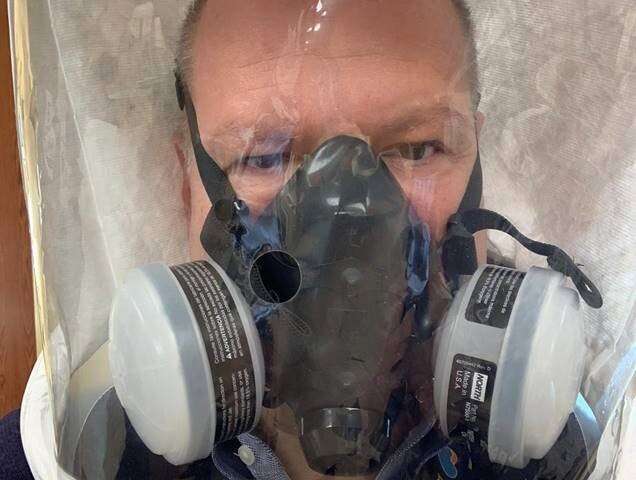
In a new article, scientists provide an exhaustive, evidence-based review of how COVID-19 droplets from infected patients spread through the air and describe how health care professionals can protect themselves. This Pulmonary Perspective is published online in the American Thoracic Society’s American Journal of Respiratory and Critical Care Medicine.
In “Coughs and Sneezes: Their Role in Transmission of Respiratory Viral Infections, Including SARS-CoV-2,” Rajiv Dhand, MD, professor and chair, Department of Medicine and associate dean of clinical affairs, University of Tennessee Graduate School of Medicine, along with Jie Li, Ph.D., RRT, associate professor, Department of Cardiopulmonary Services, Division of Respiratory Care, Rush University Medical Center, describe the various types and sizes of virus-containing droplets present in sneezes and coughs, the locations in the respiratory systems where they deposit, and how certain medical procedures and devices may spread these droplets and the risks for health care professionals.
“The apprehension about the use of aerosolized therapies in COVID-19 patients relates to their potential to spread infectious aerosols,” said Dr. Dhand. “Our recommendations offer a balanced, scientific perspective on the use of such aerosolized therapies in patients infected with SARS-CoV-2, the virus that causes COVID-19.”
Airborne particles may be produced by various aerosol generating procedures (AGPs), such as suctioning or tracheal intubation, as well as by aerosol generators, especially jet nebulizers.
“AGPs such as intubation, bronchoscopy, physiotherapy and suctioning generate potential infectious bioaerosols by provoking coughs and are associated with increased infection rates among employees working in health care,” stated the authors. “In contrast, AGPs such as oxygen therapy, use of humidified high-flow nasal cannula, non-invasive ventilation and manual ventilation via mask are less about ‘generating’ bioaerosols and more about ‘dispersing’ aerosols further away from the patient.”
Drs. Dhand and Li noted that the evidence linking AGPs to spread of viral infections is limited by the low quality of studies on this topic. They also noted that aerosols produced by medical aerosol generators do not contain pathogens unless the aerosol device is contaminated.
The authors make a number of recommendations for reducing the transmission of respiratory tract infections, which are consistent with guidelines from the Centers for Disease Control and Prevention. They include (please see the article for more detail):
- Avoid procedures that irritate airways and provoke violent coughing and try to reduce exposure to infectious aerosol.
- If possible, health care providers should stay six feet away from infected patients, especially when the patient is coughing or sneezing.
- When using a mechanical ventilator, institute barriers to filter the virus or reduce virus dispersion by placing a filter at the exhalation port of the ventilator or connecting a filter to the oxygen mask.
- For spontaneously breathing patients, placing a surgical mask on the patient’s face or using tissue to cover his or her mouth, especially during coughing, sneezing or talking, may reduce the dispersion distance or viral load.
- Employ PPE for health care providers.
- While, ideally, infected patients should be in single rooms to prevent droplet dispersion, it is acceptable for two patients with the same infection that is spread by respiratory droplets to be in the same room.
Dr. Dhand concluded, “Coughs and sneezes create respiratory droplets of variable size that spread respiratory viral infections. Because these droplets are forcefully expelled, they are dispersed in the environment and can be exhaled by a susceptible host. While most respiratory droplets are filtered by the nose or deposit in the oropharynx, the smaller droplet nuclei become suspended in room air and individuals farther away from the patient may inhale them.
Source: Read Full Article
